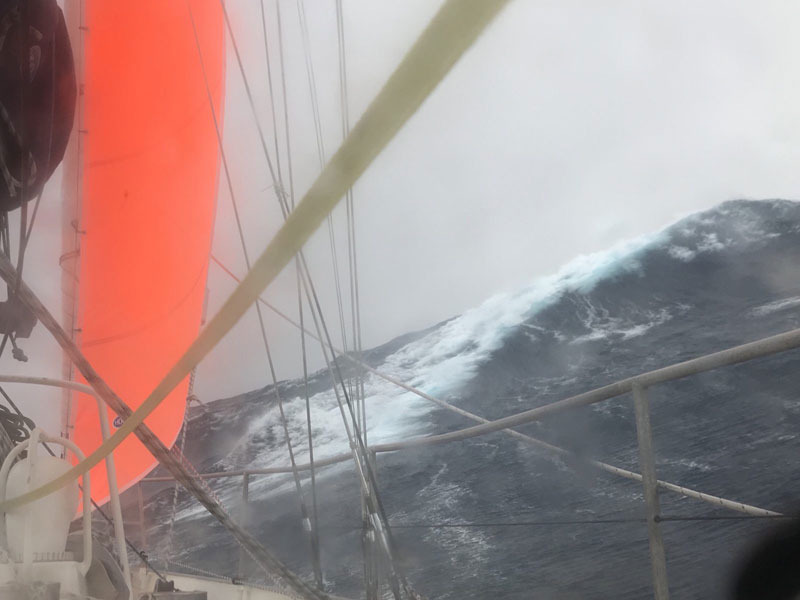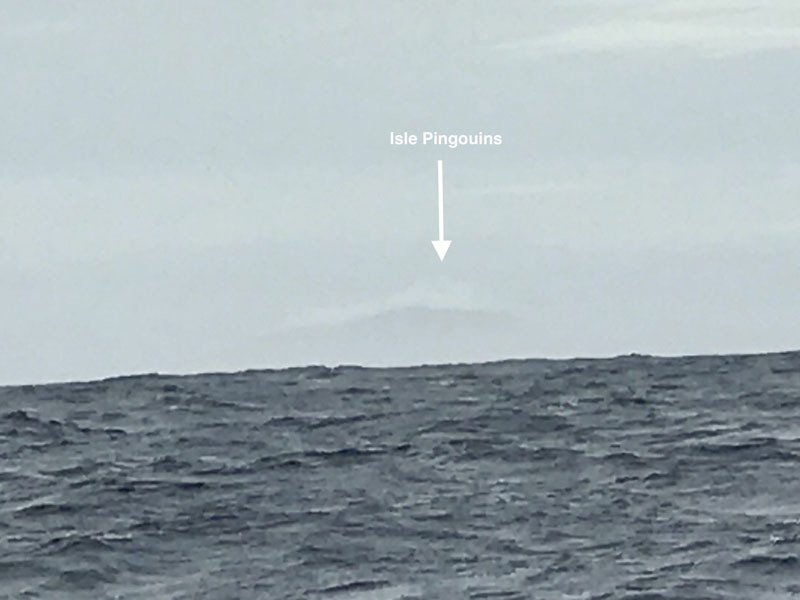
Three Knockdowns and a Broken Window for Randall Reeves
Randall Reeves had a bad day — a really bad day. Long story short, he is making his way to Australia for repairs. It’s not clear what impact this will have on the Figure 8 Voyage as a whole, as Reeves was already behind schedule in his circumnavigation of Antarctica and his projected return to Cape Horn by the end of April, before the onset of winter in the Southern Ocean.
Reeves was well east (and significantly south) of the Cape of Good Hope and keeping Antarctica to starboard when he started working his way through a low around February 17. On February 18 came the first of a few cryptic blog posts from “Team Figure 8” saying that his tracker was out. On the 19th, another post from Team F8 said that Reeves was headed to Australia.

After some technical issues regarding Reeves’ communication, the Bay Area native was able to fill readers in on what happened (this is a truncated version from Reeves’ February 20 post): “Winds had increased to a steady 30 to 35. Remarkable however were the seas, steep and breaking and far larger than one would expect from 35 knots. The dominant swell was west with a smaller train from the northwest and another, inexplicably, from the south . . . At 1900 I was typing here in the pilot house when Mo was knocked flat to starboard. Water came pouring in the starboard pilot house dorade vent, the only one I’ve left open so we can have at least a modicum of fresh air below. The laptop was soaked but miraculously survived.” Reeves recovered, and tried to find a comfortable angle in the incredibly confused seas. “No more knockdowns, so by 11 p.m. I started sleeping.
“At about 2 a.m. we were knocked over again. I could hear the wave come on us. The sound is like being overtaken by an angry jet engine. Then your 20,000 pound boat is thrown as if it has all the heft of a dog toy. I could see from the pilot house that the starboard rail had been bent in from the impact of the boat’s fall onto the solar panel lashed to the rail. Lines were all ahoo, but there was no other damage.” Reeves was still trying to find the sweet spot through the three-wave-train seas.
“The wind had started to come more into the west, so I gybed Mo around. This, I felt, gave her a less sharp angle of approach to the westerly swell and she seemed to ride better. I was clearly incorrect in this assessment for an hour later we were knocked hard over to port. I was sitting in the pilot house when the hit occurred. The sensation was of being slammed to the ground. The port side window over the navigation station shattered. It was well underwater at this point, and green water gushed in. In a moment the boat righted. I remember seeing the water flow in, over the navigation desk, onto the floorboards in a big, heavy stream, but the shattered window didn’t register until I looked up and could see the clear ocean and jagged glass.”
We will refer you to the aforelinked Figure 8 blog for the full details of the story. Randall Reeves says he’s OK, is making jokes (“Temp: 57! Feels like summer!”), and on his way to an unknown port of call in Australia, some 3700 miles away.

